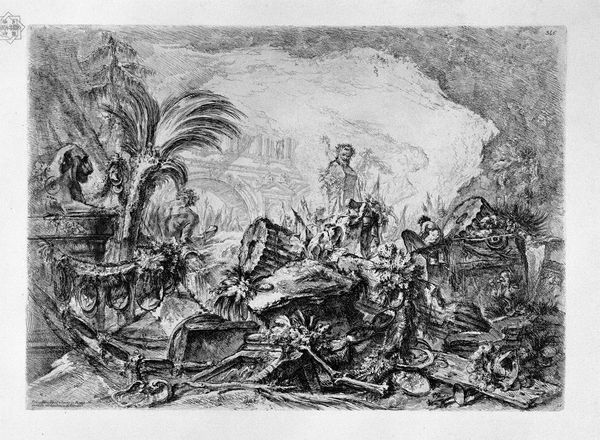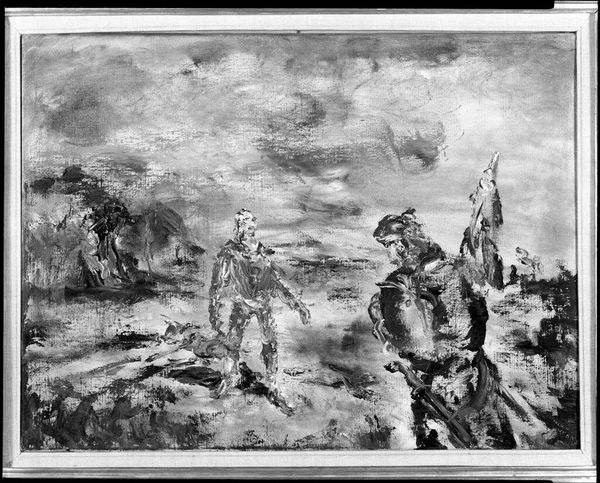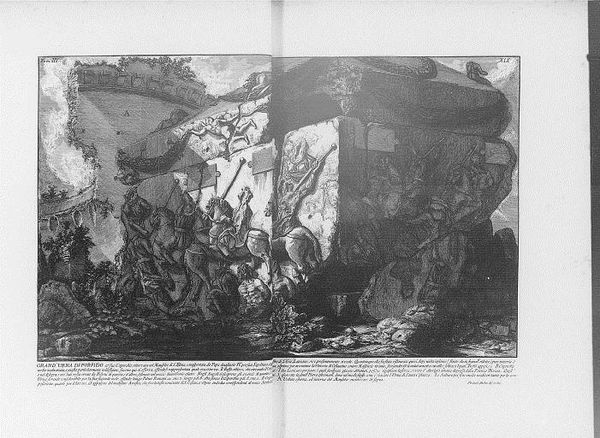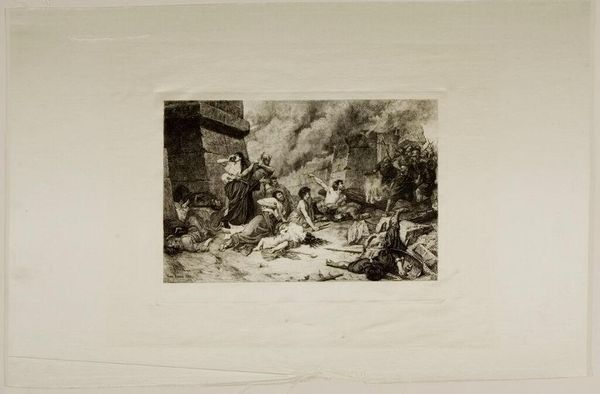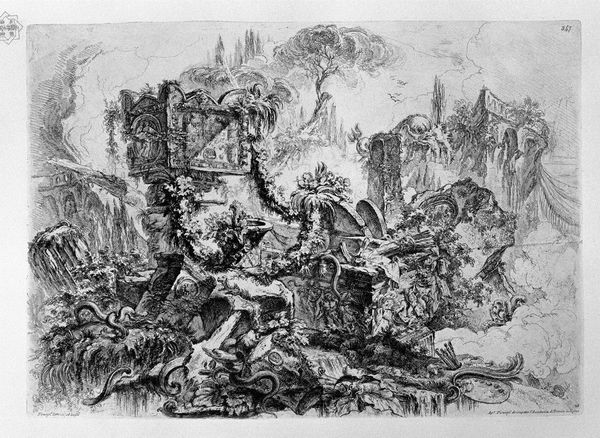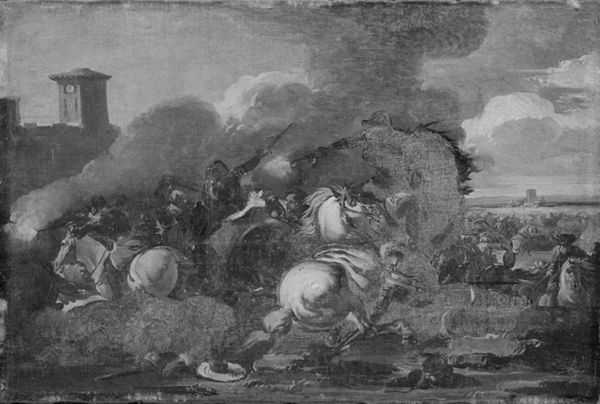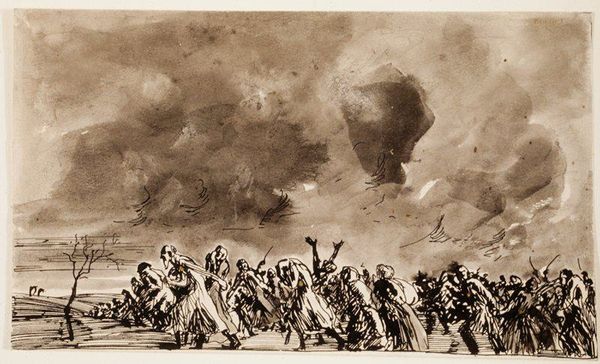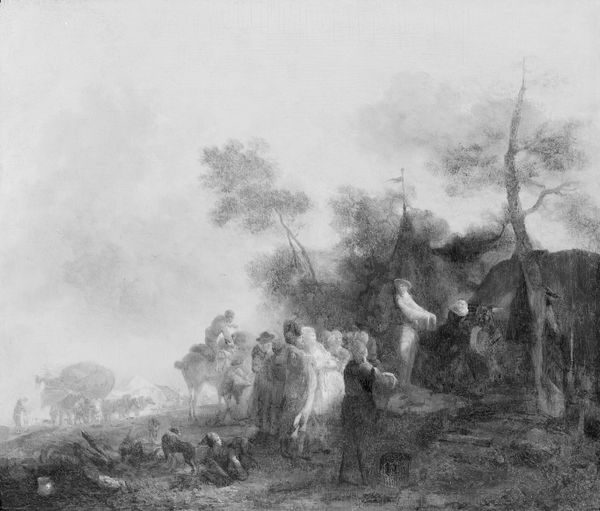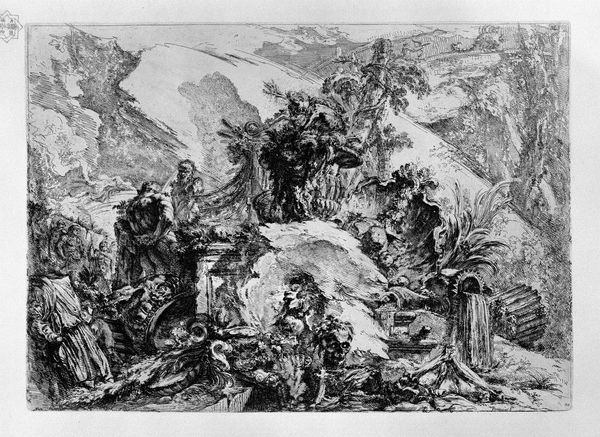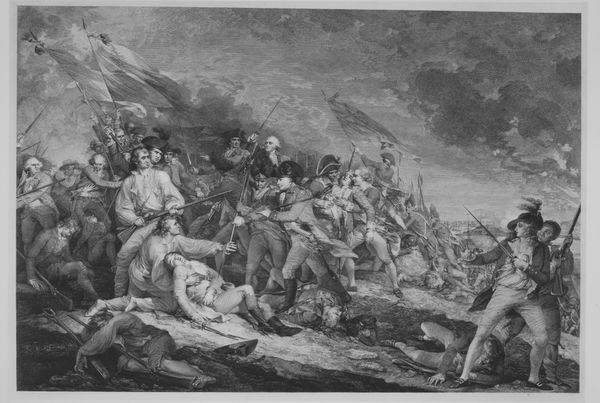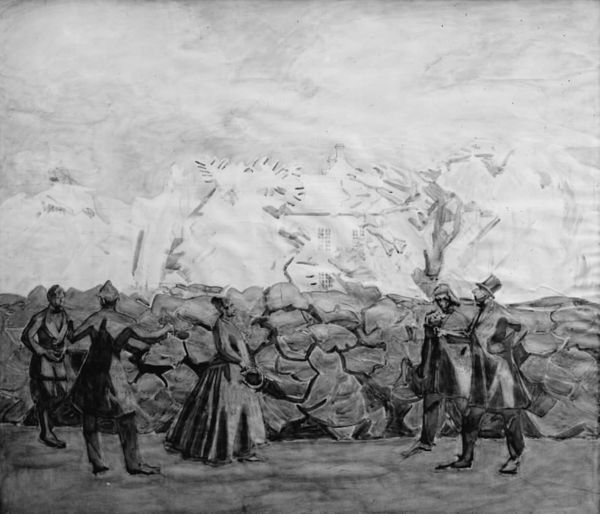
Vulcan Presenting Arms for Aeneas to Venus from a set of The Loves of the Gods 1754
0:00
0:00
drawing, textile, paper
#
drawing
#
allegory
#
baroque
#
textile
#
charcoal drawing
#
figuration
#
paper
#
text
#
history-painting
#
decorative-art
#
rococo
Dimensions: 14 ft. × 17 ft. 10 in. (426.7 × 543.6 cm)
Copyright: Public Domain
Curator: Here we have François Boucher's 1754 drawing, “Vulcan Presenting Arms for Aeneas to Venus," which is currently held at the Metropolitan Museum of Art. It’s part of a larger set called "The Loves of the Gods." Editor: My immediate impression is one of almost overwhelming dynamism, even in grayscale. The composition feels restless, pulling the eye across various planes and muscular bodies, all captured with remarkable chiaroscuro. Curator: Yes, and that visual dynamism ties directly to the mythological weight. Vulcan, the blacksmith god, is forging armor for Aeneas at the behest of Venus, Aeneas' mother. This embodies the idea of divine intervention in mortal affairs, suggesting a predetermined path for Aeneas. The forging of arms isn’t just practical; it's symbolic of a hero's divinely ordained destiny. Editor: Structurally, consider how Boucher employs line. See how each figure, each element of the forge, everything is rendered with incredible sinuous energy? It creates a continuous flow, preventing any single focal point from dominating. Even the gradations of charcoal contribute, subtly unifying disparate forms into a holistic visual field. Curator: Absolutely, that’s a keen observation! I'd add that Venus’ presence also imbues the scene with ideas about love and protection. It reinforces the broader tapestry's theme of the divine at play in love stories, each a cultural mirror for social attitudes. Editor: Also, note the contrast. The relatively lighter depiction of the gods above against the more roughly rendered mortals—a compositional tool delineating hierarchy, with form literally representing societal rank and, even further, cosmic structure. Curator: And even though this is a preparatory drawing, it really shows how intertwined these mythical tales were to societal aspirations during that time. Boucher isn’t just illustrating a story, he is affirming the symbolic underpinnings of the French court itself. Editor: The absence of color does not impoverish this artwork; instead, the contrast of tones intensifies the allegory. Boucher forces the viewer to fill the frame with more than pigment. It is history, memory, expectation… all working to amplify the narrative thrust. Curator: Indeed! Examining these classical figures through a Rococo lens gives us profound insights into what these ancient tales continued to mean during the Enlightenment. It's not merely antiquarian; it's living tradition, breathing and evolving. Editor: An excellent reminder that the power of an image lies not only in what's depicted but how the arrangement itself dictates meaning and memory.
Comments
No comments
Be the first to comment and join the conversation on the ultimate creative platform.
